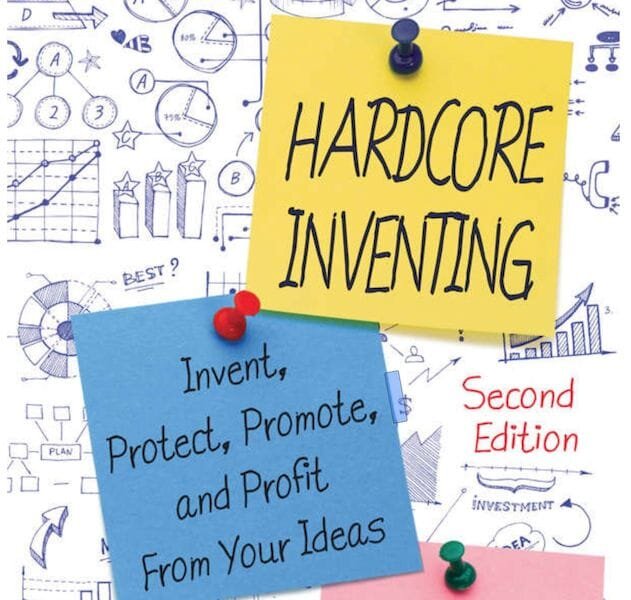![Hardcore Inventing [Source: Amazon]](https://fabbaloo.com/wp-content/uploads/2020/05/image-asset_img_5eb090702f823.jpg)
This week’s selection is “Hardcore Inventing” by Robert Yonover and Ellie Crowe.
Inventing is something done by many Fabbaloo readers. It’s the process of transforming an innovative idea into a real, functioning item. But is that all there is to it?
By no means; there are a multiple of steps required to create a true invention. Steps are required before building and after building, as there are countless considerations beyond the physical item itself. What might they be?
That’s the subject of this interesting book that focuses on the practice of “invention”.
The authors cover the following topics that should walk one through the entire process of invention:
-
Find the problem you can solve
-
Build a show prototype
-
Create an attention-grabbing and memorable name
-
Find investors
-
Safeguard your intellectual property
-
Navigate critical crossroads
-
License and market your invention
As you can see, the only “building” step is the second one, where you produce a prototype. That can be done, no doubt, with the help of 3D printing technologies. The other parts are just as, if not more, important than actual construction.
I find many would-be inventors focusing on the “I can make this” aspect, rather than the “What do people actually need” aspect. Very often I’ve seen makers build the most amazing things — that no one would ever buy.
It’s not that the maker is deficient in capabilities; instead it’s that they have the wrong focus. The end goal of inventing is to produce something that people actually need to the point where they will part with their money to get it. This book spends considerable time focusing on that aspect to ensure the reader understands what is to be done.
After prototyping there is a great deal to do, including marketing and copious legal work to ensure no one else steals your idea. This will require investment, unless you are privately wealthy. And that investment requires a different kind of marketing in which you’re selling your business idea to an investor, rather than selling a product to a client.
The book includes analysis of several case studies of inventors and inventions, which are always useful to examine, particularly if one is new to the invention game.
There are also step-by-step guides explaining exactly what has to be done to execute the different stages of the invention process. For example, do you know how to promote your product? What marketing steps would you take? This is the knowledge you’ll gain with this interesting book.
For those who have an itch to invent something, this book would be useful to review, if only to understand what you are getting into when you commit to building something for the public.
Via Amazon

